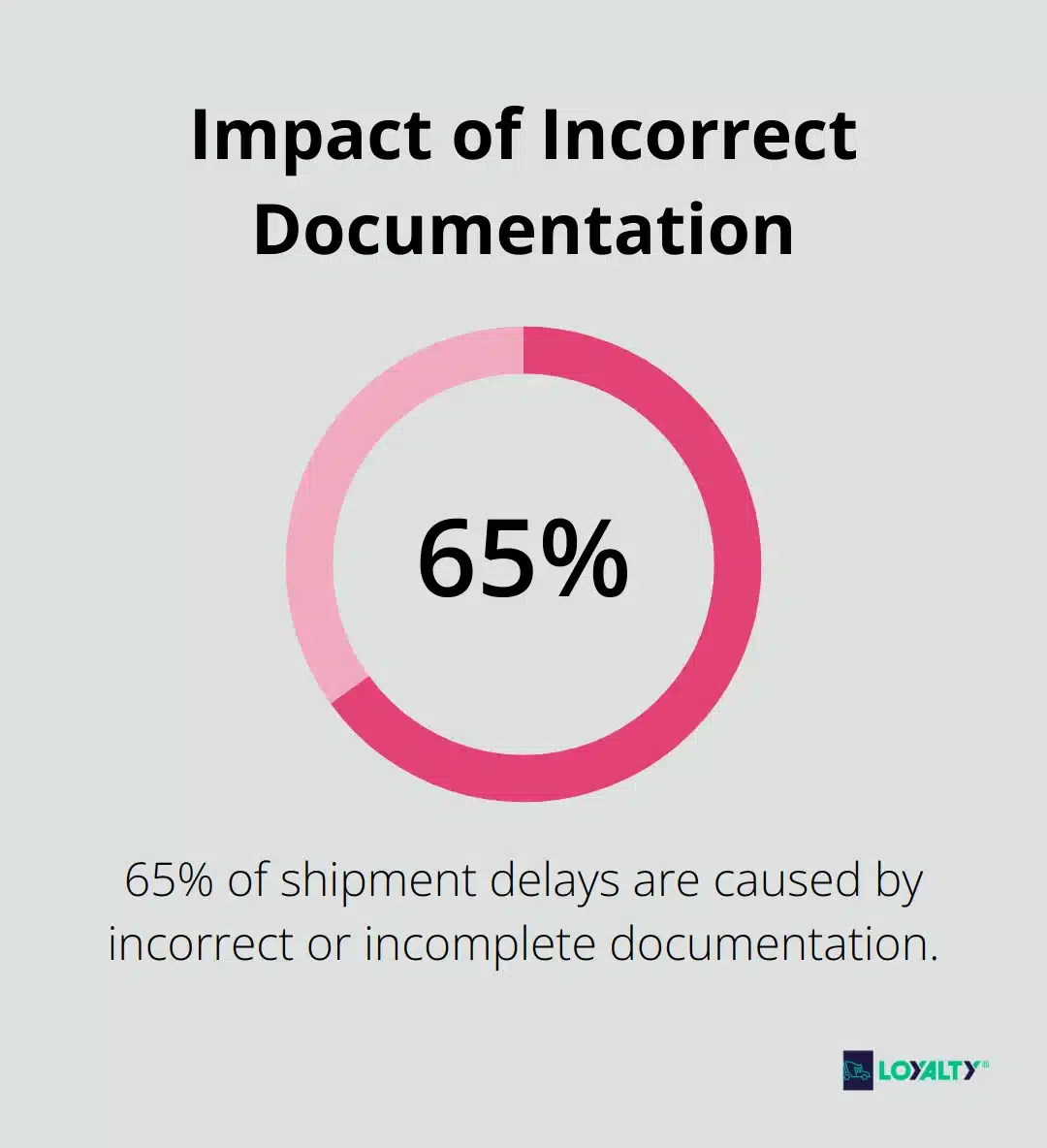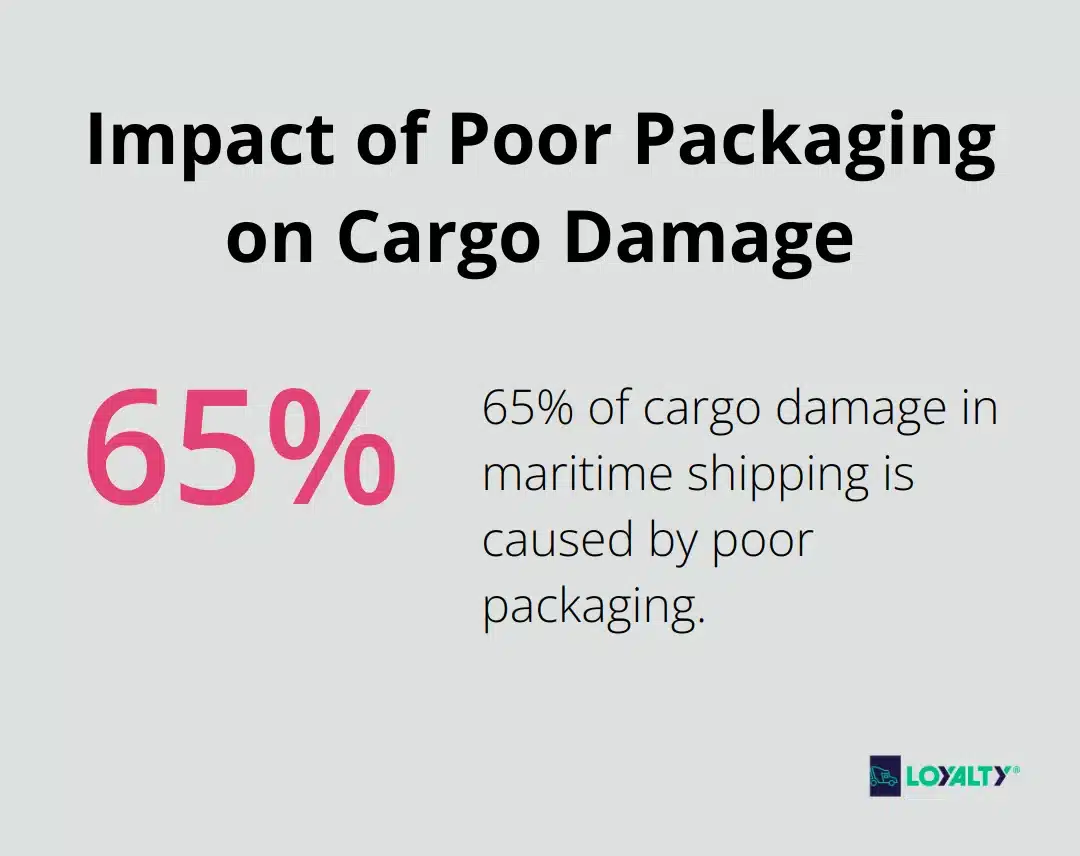Shipping Less Than Container Load (LCL) can be a game-changer for small businesses and occasional shippers. It offers flexibility and cost-effectiveness when you don’t have enough goods to fill an entire container.
At Loyalty Logistics, we’ve helped countless clients navigate the complexities of LCL shipping through our comprehensive freight services that cater to businesses of all sizes. This guide will walk you through the essentials, from understanding the basics to implementing best practices for successful shipments.
What Is LCL Shipping?
Definition and Basics
Less Than Container Load (LCL) shipping allows multiple shippers to share space in a single container. This method proves ideal for transporting goods that don’t fill an entire container, offering a cost-effective solution for smaller shipments.
LCL vs FCL: Key Differences
The primary distinction between LCL and Full Container Load (FCL) shipping lies in the volume of goods transported. FCL involves a single shipper using an entire container, while LCL combines shipments from multiple shippers. This difference impacts pricing, handling, and transit times. For businesses looking to understand these concepts in greater detail, exploring LCL freight shipping strategies can provide valuable insights into optimizing your shipping approach.
A Drewry Maritime Research study revealed that LCL shipments typically cost 30-40% more per cubic meter than FCL. However, for smaller shipments, LCL often proves more economical overall. FCL shipments usually boast faster transit times and fewer touch points, which reduces the risk of damage or loss.

Advantages for Small Businesses
LCL shipping offers several benefits for small businesses and occasional shippers:
- Flexibility: Ship as little as one cubic meter of goods, allowing for better inventory management and cash flow control.
- Cost-effectiveness: For shipments under 15 cubic meters, LCL can be up to 50% cheaper than FCL (according to a Freightos report). This makes it an attractive option for businesses with limited shipping volumes or irregular shipment schedules.
- Reduced costs: LCL can cut shipping costs by up to 30% compared to air freight for non-urgent shipments, directly impacting the bottom line for small businesses operating on tight margins. For businesses exploring alternative shipping methods, understanding how LTL shipping benefits can complement LCL strategies provides additional cost-saving opportunities.
Practical Considerations
When opting for LCL, consider these factors:
- Consolidation and deconsolidation times: These processes can add 5-7 days to your overall shipping time (data from iContainers). Plan your inventory accordingly to avoid stockouts.
- Packaging: Invest in sturdy packaging to prevent damage. The World Bank estimates that poor packaging contributes to 65% of cargo damage in maritime shipping.
- Shipping frequency: Evaluate your shipping needs to determine if LCL aligns with your business model and inventory requirements.
As you weigh the benefits and considerations of LCL shipping, it’s essential to understand the steps involved in the process. Let’s explore how to prepare and execute an LCL shipment effectively.
How to Execute an LCL Shipment
Prepare Your Goods
Start with accurate measurements and weights of your cargo. This information enables precise quotes and prevents unexpected fees. Package your items securely with appropriate materials to prevent damage during transit. The World Shipping Council reports that proper packaging can reduce cargo damage by up to 65%.
Label each package clearly. Include your company name, destination, and any special handling instructions. For international shipments, add the country of origin and harmonized system (HS) code to speed up customs clearance. Understanding international shipping complexities is crucial when preparing documentation and ensuring compliance with different countries’ requirements.
Select a Freight Forwarder
The right freight forwarder can make or break your LCL shipping experience. Look for a company with extensive LCL shipping experience and a strong global partner network. Consider their track record, customer reviews, and range of services. A good forwarder should offer end-to-end solutions, including customs clearance and last-mile delivery.
When evaluating options, Loyalty Logistics stands out with a 98% on-time rate and over 10,000 successful deliveries, making it a top choice for LCL shipments.
Obtain and Compare Quotes
Request quotes from multiple freight forwarders to ensure competitive pricing. Provide detailed information about your shipment, including dimensions, weight, origin, and destination. Ask for a breakdown of all costs (base rates, surcharges, and additional fees).
Don’t automatically choose the cheapest option. Consider factors like transit times, service quality, and the forwarder’s reputation. Drewry Maritime Research found that LCL shipments typically cost 30-40% more per cubic meter than FCL, but for smaller volumes, they remain more economical overall.
Book and Prepare Documentation
Book your shipment well in advance. LCL shipments often require longer lead times due to consolidation processes. Prepare all necessary documentation, including:
- Commercial Invoice
- Packing List
- Certificate of Origin (if required)
- Bill of Lading
Ensure all information is accurate and consistent across documents. The U.S. Customs and Border Protection states that incorrect or incomplete documentation causes 65% of shipment delays.

Track Your Shipment
Use modern technology to your advantage. Most reputable freight forwarders offer real-time tracking services. Monitor your shipment’s progress and anticipate potential issues.
Communicate proactively with your forwarder. If you notice any discrepancies or delays, contact them immediately for clarification or assistance. This approach can help solve problems before they escalate.
As you navigate the LCL shipping process, it’s important to understand best practices that can further optimize your shipments. Let’s explore these strategies in the next section to ensure your LCL shipping experience is as smooth and cost-effective as possible.
Mastering LCL Shipping Best Practices
Perfect Your Packaging
Proper packaging protects your goods in LCL shipments. The World Shipping Council reports that poor packaging causes 65% of cargo damage in maritime shipping. To safeguard your items:

- Use strong boxes or crates that withstand stacking and handling.
- Fill empty spaces with appropriate cushioning materials.
- Seal packages securely with durable tape.
- Apply clear, waterproof labels with complete shipping information.
For fragile items, use custom-fit foam inserts or double-boxing for extra protection. Your goods will be consolidated with others, so robust packaging is essential.
Navigate Incoterms and Regulations
Understanding Incoterms (International Commercial Terms) is important for smooth international shipping. These standardized terms define the responsibilities of buyers and sellers in global trade. The most common Incoterms for LCL shipping are:
- FOB (Free on Board): Seller takes responsibility until goods are loaded onto the ship.
- CIF (Cost, Insurance, and Freight): Seller arranges shipping and insurance to the destination port.
Familiarize yourself with customs regulations for both origin and destination countries. The U.S. Customs and Border Protection states that 65% of shipment delays occur due to incorrect or incomplete documentation. For businesses shipping internationally, specialized cross-border freight solutions can help ensure compliance and streamline the process. Work closely with your freight forwarder to ensure compliance and avoid costly delays.
Mitigate Risks with Insurance
Many shippers overlook insurance, but it’s an important safeguard for your cargo. Standard carrier liability often covers only a fraction of your goods’ value. For example, ocean carriers typically limit liability to $500 per package or customary freight unit.
Comprehensive cargo insurance can protect you against loss, damage, and even general average declarations. The cost is usually minimal compared to the potential loss (often ranging from 0.3% to 0.5% of the cargo’s value).
Plan Strategically for Consolidation and Delays
LCL shipments involve consolidation processes that can add 5-7 days to transit times (according to data from iContainers). Plan your inventory accordingly to avoid stockouts. Some strategies to consider:
- Build a buffer into your lead times.
- Use tracking tools to monitor shipment progress.
- Communicate proactively with your freight forwarder about any time-sensitive shipments.
During peak seasons (like the months leading up to the holiday shopping season), expect potential delays and plan even further in advance.
Optimize Your Shipping Strategy
Analyze your shipping patterns to determine the most cost-effective approach. For shipments under 15 cubic meters, LCL can be up to 50% cheaper than FCL (according to a Freightos report). However, if you consistently ship larger volumes, consider these options:
- Consolidate multiple small shipments into one larger LCL shipment.
- Explore FCL options if your volume approaches 15-20 cubic meters.
- Consider air freight for urgent, smaller shipments. While more expensive, it can be faster and more reliable for time-sensitive goods.
Industries with specific requirements, such as manufacturing logistics solutions, may benefit from tailored LCL strategies that address their unique shipping patterns and regulatory needs.
These best practices will equip you to handle the challenges of LCL shipping and maximize its benefits for your business. You’ll likely see improvements in cost-efficiency, reliability, and overall supply chain performance as you refine your approach.
Final Thoughts
Shipping Less Than Container Load (LCL) provides a flexible and cost-effective solution for businesses with smaller shipping volumes. LCL shipping benefits small businesses, startups, and companies with irregular shipping needs. It allows better inventory management, improved cash flow, and the ability to ship as little as one cubic meter of goods.
Success in LCL shipping requires attention to detail. Proper packaging, accurate documentation, and strategic planning help navigate potential challenges such as longer transit times and multiple handling points. Working with experienced freight forwarders and staying informed about regulations and best practices minimizes risks and maximizes the benefits of LCL shipping. When selecting logistics partners, understanding the nuances of freight broker selection can help you choose the right partner for your LCL shipping needs.
Loyalty Logistics can help streamline your shipping process and enhance your overall supply chain efficiency. Effective LCL shipping balances cost, speed, and reliability to align with your business needs (which can unlock new opportunities for growth and competitiveness in the global marketplace). Mastering the art of shipping less than container load will position your business for success in international trade.
Ready to Optimize Your LCL Shipping Strategy?
Navigating less than container load shipping doesn’t have to be complicated. Our logistics experts specialize in LCL solutions that maximize efficiency while minimizing costs for businesses of all sizes.
Whether you’re shipping domestically or across borders, we’ll help you find the perfect freight shipping solutions tailored to your specific cargo requirements and budget.
📦 Contact us today for a personalized LCL consultation and discover how we can streamline your shipping operations with our expertise and competitive rates.
[Get Your Free LCL Quote Now →] Freight Services



